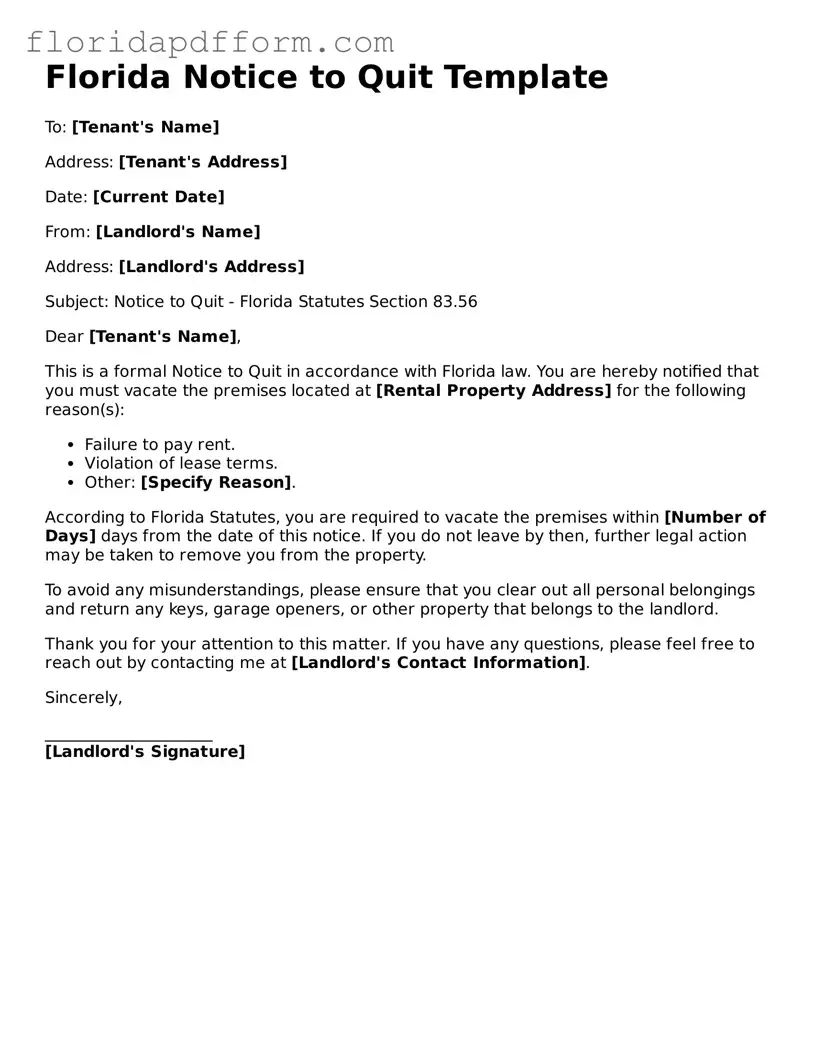How to Use Florida Notice to Quit
After completing the Florida Notice to Quit form, the next step involves delivering it to the tenant. Ensure you follow the appropriate delivery method, as this can affect the legal standing of the notice. Proper completion of the form is crucial for a smooth process.
- Obtain the Form: Download the Florida Notice to Quit form from a reliable source or obtain a physical copy.
- Fill in Your Information: At the top of the form, enter your name, address, and contact information as the landlord.
- Tenant's Information: Provide the tenant's name and address in the designated section of the form.
- Specify the Reason: Clearly state the reason for the notice, such as non-payment of rent or violation of lease terms.
- Notice Period: Indicate the number of days the tenant has to vacate the property, as required by Florida law.
- Sign and Date: Sign the form and include the date of signing to validate the notice.
- Make Copies: Create copies of the completed form for your records and for delivery to the tenant.
- Deliver the Notice: Deliver the notice to the tenant using an acceptable method, such as personal delivery, certified mail, or posting on the property.
